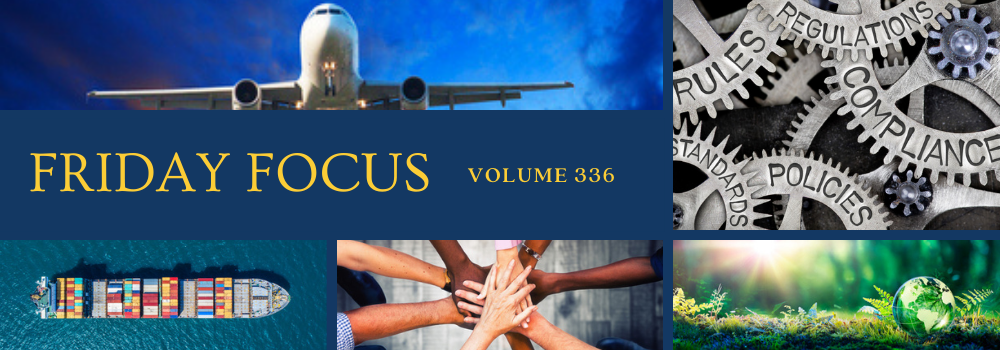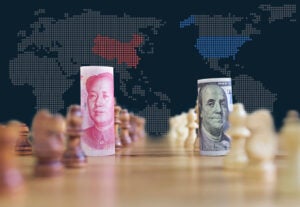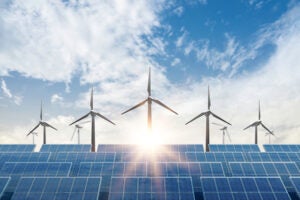|
Next Wednesday, on August 30, the WITA Academy will host an online workshop on Artificial Intelligence and Trade Policy. Information can be found here and below.
If you register for the 2023 Intensive Trade Seminar you can attend the AI Workshop for free (up to $100 value)!
Artificial intelligence (AI) plays an important role in initiating global supply-chain strategies. Although AI is commonly associated with data analytics, it also has a remarkable ability to handle large volumes of unstructured data in real-time. Instances of unstructured data, such as social-media posts, emails, audiovisual files, and news reports, pose difficulties for traditional data collection and interpretation. Organizations miss out on valuable insights that can improve their supply-chain resilience and efficiency when they ignore such information. This is where AI models come into play…
AI-Infused Supply Chains
Modern AI models are based on deep neural networks that are adept at detecting patterns in vast amounts of unstructured data. By analyzing disparate data sources — e.g., social-media posts indicating unexpected spikes in demand for specific goods and news reports covering local political unrest and natural disasters — AI models can predict potential supply-chain disruptions. As the models adapt and learn, their predictions gain accuracy, enabling businesses to respond quickly and effectively.
In recent years, environmental, social, and governance (ESG) issues have come to the forefront of business operations because regulators, investors, researchers, and customers increasingly demand quantitative measures of sustainability performance from companies. However, ESG measures are meaningless unless they extend beyond a company’s boundaries to include performance across a supply chain. AI can help monitor a company’s carbon footprint throughout its entire supply chain and help ensure labor compliance throughout. AI also can evaluate potential supply partners based on their ESG ratings.
How to interact with an AI-infused supply-chain landscape is an increasingly important consideration. The pandemic catalyzed AI use in many ways by pushing businesses to their breaking points and forcing them to adapt. However, the use of AI in global supply remains in its infancy. Accelerating adoption may require a new catalyst, such as another major disruption or increased awareness of AI’s potential to improve supply-chain resilience and ESG compliance. Growing interest in generative AI (e.g., DALL.E-2 and ChatGPT) also could catalyze further adoption.
Companies need to realize that potential uses for AI go beyond data analysis. AI can help to usher in a new era of resilient, ethical, and sustainable supply-chain management. Integrating AI into supply-chain management is about more than just business survival. It ensures long-term competitiveness for companies in a world where ESG issues and geopolitical instability are at the forefront of both strategic and operational decision-making. Companies that leverage AI will be prepared for the next phase of global supply-chain transitions, gaining a competitive advantage in a world permanently changed by the COVID-19 pandemic.
|
|
The use of artificial intelligence (AI) is expanding rapidly. These technological breakthroughs present both opportunity and potential peril. AI technology offers great hope for increasing economic opportunity, boosting incomes, speeding life science research at reduced costs, and simplifying the lives of consumers. With so much potential for innovation, organizations investing in AI-oriented practices are already ramping up initiatives that boost productivity to remain competitive.
Like most disruptive technologies, these investments can both create and displace jobs. If appropriate and reasonable protections are not put in place, AI could adversely affect privacy and personal liberties or promote bias. Policymakers must debate and resolve the questions emanating from these opportunities and concerns to ensure that AI is used responsibly and ethically.
This debate must answer several core questions: What is the government’s role in promoting the kinds of innovation that allow for learning and adaptation while leveraging core strengths of the American economy in innovation and product development? How might policymakers balance competing interests associated with AI—those of economic, societal, and quality-of-life improvements—against privacy concerns, workforce disruption, and built-in-biases associated with algorithmic decision-making? And how can Washington establish a policy and regulatory environment that will help ensure continued U.S. global AI leadership while navigating its own course between increasing regulations from Europe and competition from China’s broad-based adoption of AI?
|
|
|
Increasing interdependence has led to greater competitiveness and more inducements to resort to strategic trade policy. Trade policy assumes further significance in the economic battle of valiant liberal reformers in their fight against self-dealing rent seekers profiting from inconsistencies in the transition economy. Many of the client policies that shelter rent seekers are impossible to maintain in the face of international competition. On the other hand, high tariff walls, export licensing, and artificial exchange rates provide numerous sources of rents for businesspeople out to promote their own loyalties.
The reduction or elimination of trade restrictions significantly stimulates world trade and conversely, foreign trade is an important factor driving the economic growth of individual countries. However, it should be stressed that free trade is not the sole contributing factor to economic growth; macroeconomic stability and investment are more significant.
It has to be stressed that if unemployment is increasing and/or inequality widening while global supply chains are expanding and multiplying, and if most voters attribute the former to the latter, then governments may well refrain from pursuing further international trade liberalization and might even find protectionism alluring. another possibility would be for governments to use more intensively public policies for protectionist purposes. as for trade negotiations, focusing exclusively on the increased efficiency resulting from opening up trade is no longer possible. Distribution and labor-market effects also need to be considered and various measures proposed in order to win the electorate over to open trade by bilateral agreement, especially at times when global supply chains are expanding and multiplying.
As global supply chains have expanded and multiplied, the formulation of new theoretical models of the firm have made it possible to explore the effects that differences in firms have had on the political economy of trade. It has to be stressed that opening up trade has had two opposing effects on domestic firms in the same industry. First, the cost of exporting decreases, which obviously allows more firms to export and increases the sales of established exporters. Secondly, competition increases, which harms domestic firms. Which of these opposing tendencies prevails for an individual firm depends on such characteristics as size. As a result, lobbying competition arises not only between sectors but also within sectors with the inevitable result that there are winners and losers. This might especially be the case when costs are fixed, because barriers to entry are raised, thereby shielding existing producers and exporters from competition.
Current trends in international business and global politics provide evidence that emerging markets have finally made their presence felt on the world economy, bringing new patterns of uneven development, inequality and injustice in their wake. Their newly confident elites, now active on global circuits of trade, investment and finance, and in global governance, appear to have shed their previous roles. It is clear that emerging economies have suffered less severely and recovered more quickly. Moreover, it now seems that the political impact is not so much immediate crisis measures, but significant, long-term and unexpected policy shifts.
|
|
|
The Organization of the Petroleum Exporting Countries, OPEC, was established in 1960, with five founding members: Iran, Iraq, Kuwait, Saudi Arabia, and Venezuela. OPEC’s primary objective was to unify petroleum policies and secure fair prices for its member countries, which has since expanded to include 13 core members.
According to current estimates, 80.4% of the world’s proven oil reserves are located in OPEC Member Countries, with the bulk of OPEC oil reserves in the Middle east, amounting to 67.1% of the OPEC total.1 Central to OPEC’s power is its ability to leverage its collective influence to manipulate global supply and demand dynamics, thereby influencing prices. Reductions in production create market scarcity, driving prices upward, while increases result in a surplus, leading to price decreases. Decisions on production quotas are made during OPEC meetings, where member nations negotiate and coordinate their strategies.
The oil markets respond to changing supply and demand expectations; forecast reduced production and price goes up, forecast increased production and price goes down.
This is just one example of the strength of OPEC’s influence on international oil prices. Each member also calculates and monitors its spare production capacity to be able to respond to potential crises that reduce oil supplies; as a result, oil prices tend to incorporate a rising risk premium when OPEC spare capacity reaches low levels.
The United States is on the cliff of its third energy revolution in 100 years.
…Up to this point, renewables have only played a minor role in US power generation; in order to fulfill the promises of a net-zero emissions scenario by 2030, 2040, or 2050…wherever the target is now!
The shift from a fuel-intensive to a material-intensive energy system powered by renewables will rely on a supply chain for critical minerals and rare earth metals controlled by only a handful of countries.
Where is this fuel coming from?
The materials necessary for our smart phones, high technology devices, consumer and industrial batteries, electric vehicles, renewable energy infrastructure, all require the metals and rare earth elements whose supply is currently controlled by a small group of countries, led by China.
China has emerged as a dominant force in the processing of these raw materials into usable forms, driven by domestic resource availability, cost-effective labor, and advanced processing technologies. An underlying reason for China’s preeminence is the hesitation of many countries to engage in environmentally impactful processing activities associated with critical minerals. The processing journey from raw materials to refined forms involves extraction, beneficiation, smelting, and refining; processes that generate waste, release pollutants, and have adverse ecological effects on the environment. China’s willingness to engage in processing activities, albeit with varying environmental standards, has allowed it to become a global bottleneck in the green-energy metal supply chain.
|
|
|




